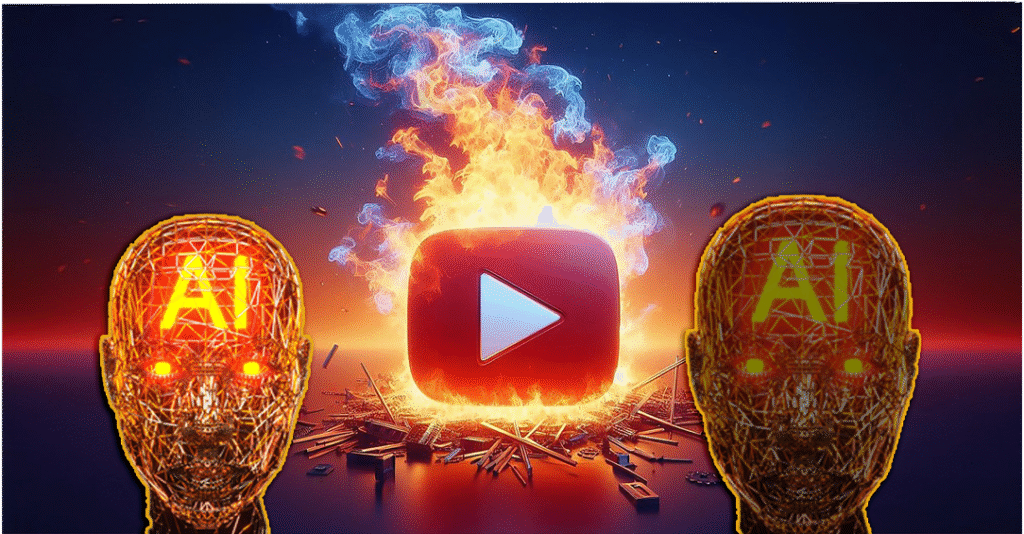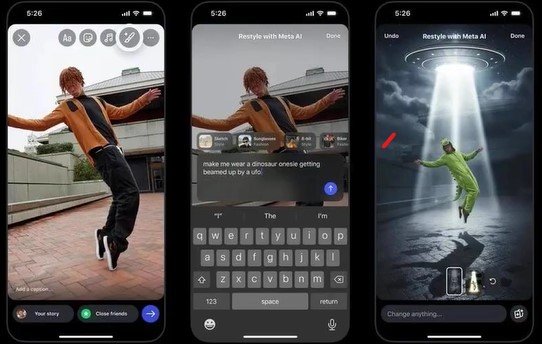YouTube is quietly applying AI upscaling and filters to creators’ videos, changing how content looks without consent. Discover why creators are worried, what it means for authenticity, and how it could affect your favorite channels.
The Rise of YouTube’s AI Filters
When creators upload videos, they expect what they made to appear exactly the same on YouTube. But that’s no longer guaranteed. Science-based YouTuber Anton Petrov discovered that some of his long-form videos were being automatically altered by YouTube’s new AI-driven filters, leading to strange visual glitches and flickering
The issue wasn’t present in his original files it appeared only after uploading. When Anton contacted YouTube support, the glitch suddenly disappeared, suggesting the problem was caused by YouTube’s processing system itself. What’s even more concerning is that this automatic AI enhancement happens without any notice or option to disable it.
Other Creators Are Seeing It Too
Anton isn’t alone. Other YouTubers, including Rhett Shull and Mr. Bravo, have reported similar experiences. Rhett noticed his YouTube Shorts were automatically enhanced with boosted saturation and contrast to look more “clickable.” Meanwhile, Mr. Bravo, known for his nostalgic ’80s VHS-style videos, said that YouTube’s AI filters removed his signature grainy aesthetic replacing it with smooth, over-processed visuals that completely erased his creative intent.
This pattern shows that YouTube’s AI tools aren’t just adjusting brightness or resolution; they’re changing the artistic style of content creators without permission.
YouTube’s Official Position
YouTube’s parent company, Google, has admitted to limited AI involvement in video processing. The company says it uses machine learning to enhance older or lower-quality uploads by improving clarity and reducing noise. In October 2025, YouTube officially announced a new AI upscaling feature for videos below 1080p, claiming it will make content look sharper and more consistent across devices.
However, creators are frustrated because these changes are being applied silently, and the promised “opt-out” option hasn’t been rolled out to everyone yet.
Why Creators Are Concerned
Many creators feel that YouTube’s AI filters are undermining their creative freedom. Video makers spend hours fine-tuning colour, texture, and mood, only to see AI alter those details without warning. This not only impacts the authenticity of their content but also their relationship with audiences.
Another major issue is safety. Anton noticed that YouTube’s AI processing introduced flickering lights into his science videos potentially dangerous for viewers with epilepsy. The fact that this glitch disappeared after YouTube intervened shows the company’s system is likely responsible.
Creators also point out the hypocrisy: YouTube now requires them to disclose when their content uses AI, yet the platform itself doesn’t disclose when it uses AI to alter a video.
A Shift in the Creator–Platform Relationship
This controversy reveals a deeper change in how platforms treat user-generated content. YouTube is no longer just a place to host videos it’s becoming an active editor, using AI to reshape how videos look and perform.
While some argue that AI upscaling improves the viewer experience, especially on high-resolution devices, others believe it erases individuality. Videos meant to look retro, raw, or cinematic are being polished into something generic. The result is a more uniform YouTube one that prioritizes visual consistency over creative expression.
What Creators Can Do
For now, creators are advised to check their videos across multiple devices after uploading, since YouTube’s AI effects can vary between phone, desktop, and TV. Uploading at higher resolutions (1080p or above) may reduce the likelihood of AI upscaling. Keeping local copies of original files is also essential for reference and protection.
If a video appears altered, document the issue with screenshots or recordings and contact YouTube Support. Transparency with your audience is equally important if your video looks different online than in your editor, let your viewers know why.
Why Transparency Matters More Than Ever
This situation raises important ethical questions. Should platforms have the right to alter creator content without consent even in the name of “quality”? And if they do, shouldn’t there be a clear disclosure stating, “This video has been enhanced or upscaled by AI”?
As AI technology becomes more integrated into creative tools and social platforms, transparency and choice must remain central. YouTube’s creators built the platform’s success on authenticity and trust. If AI starts changing what audiences see without their knowledge, that trust could quickly fade.
Conclusion
YouTube’s silent rollout of AI filters and upscaling tools highlights the tension between innovation and integrity. While improving quality sounds harmless, creators deserve to decide how their work appears not an unseen algorithm.
The platform must be more transparent, offer a simple opt-out, and respect the artistic intent that defines YouTube’s diverse creator community. Until then, viewers and creators alike should stay alert because the next time you hit play, what you’re watching might not be exactly what was uploaded.
YouTubeAI #AIUpscaling #YouTubeCreators #DigitalTransparency #ContentCreators #AIinMedia #YouTubeUpdate #CreatorNews #AIandTech #VideoEditing #TechNews #AITrends #ArtificialIntelligence #YouTubeAlgorithm
YouTube AI update 2025, YouTube AI filters, AI upscaling YouTube, YouTube creator transparency, YouTube machine learning, digital authenticity, creator control, AI and video editing, YouTube news 2025, YouTube long-form videos










